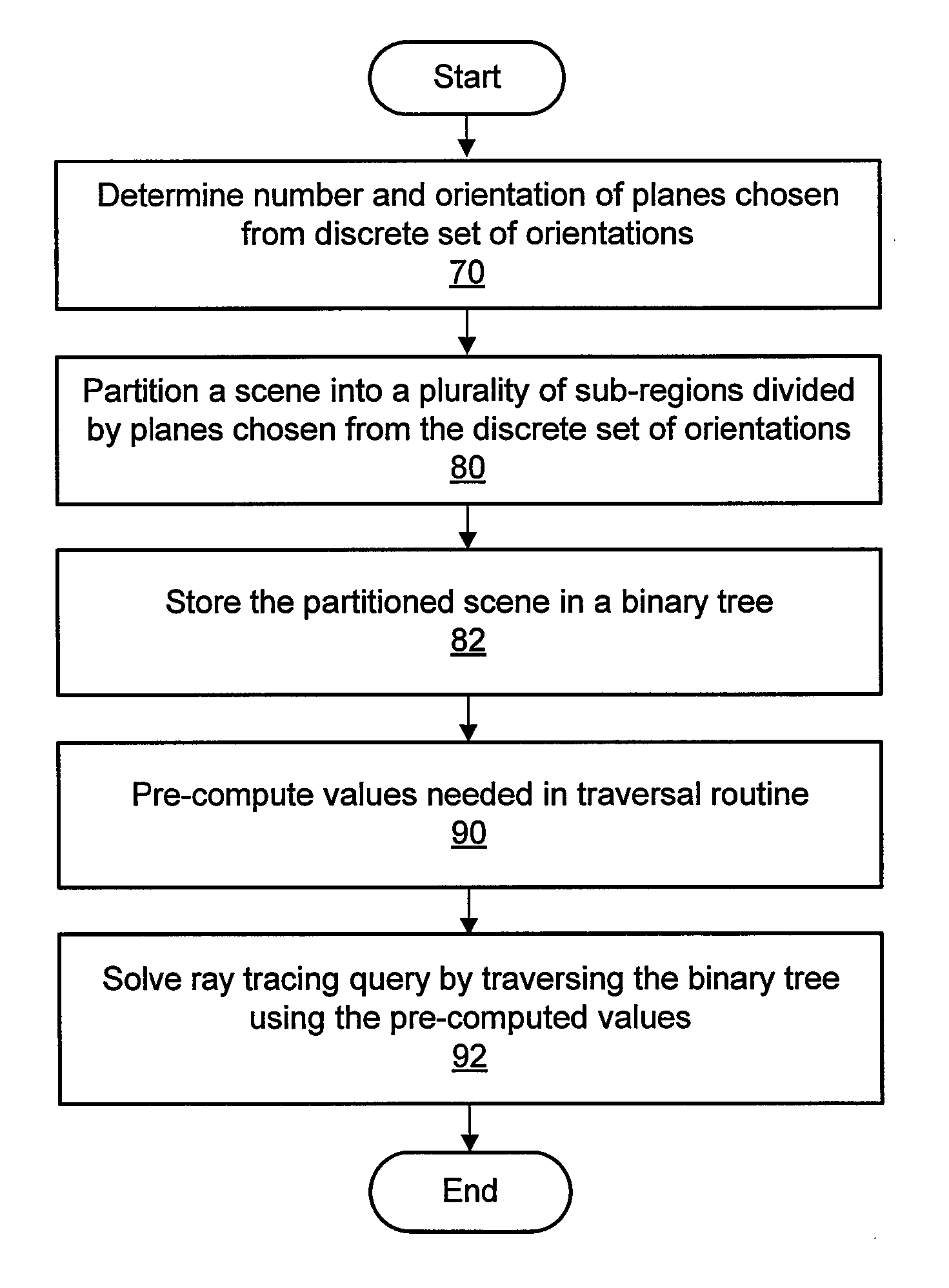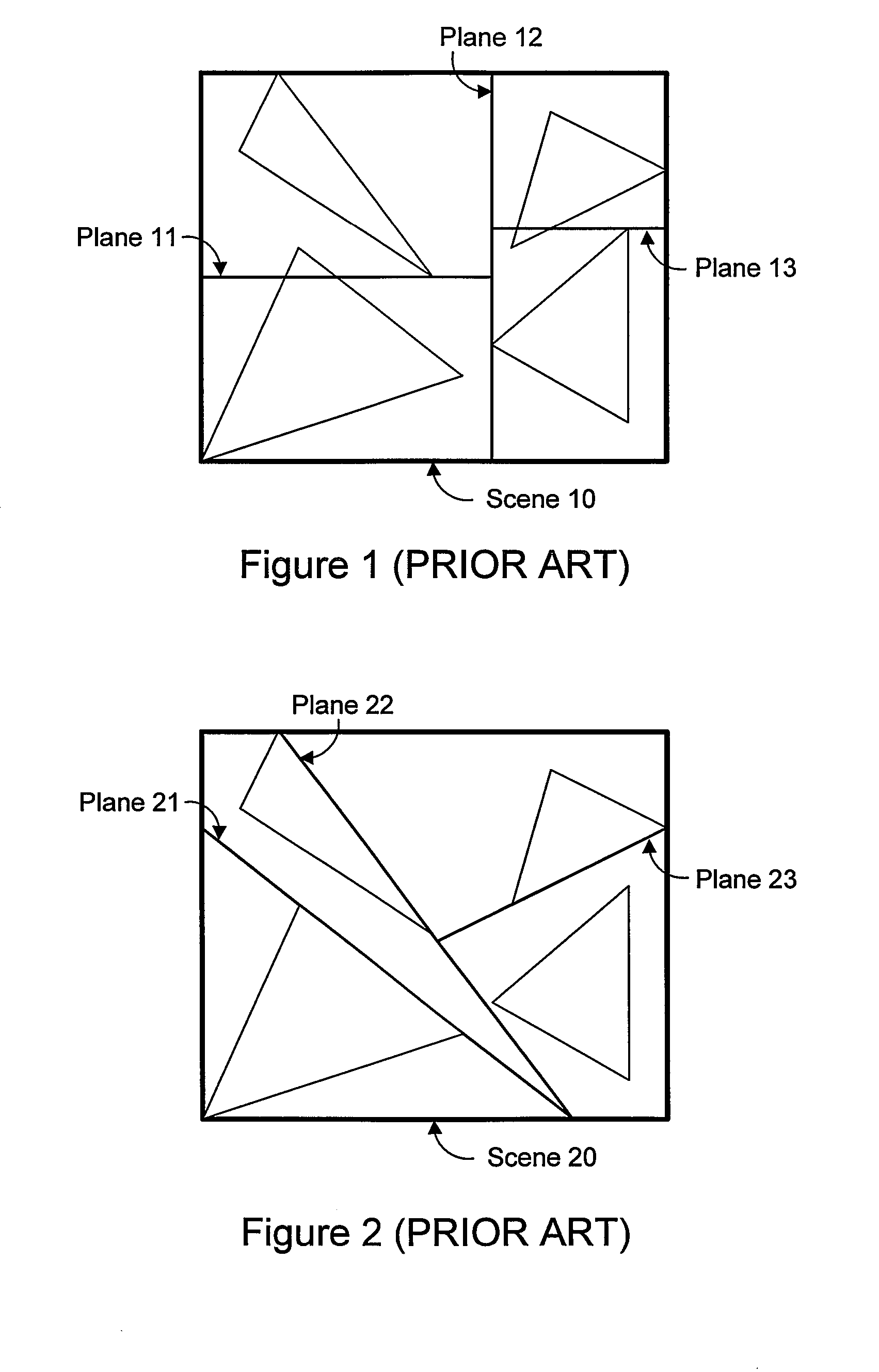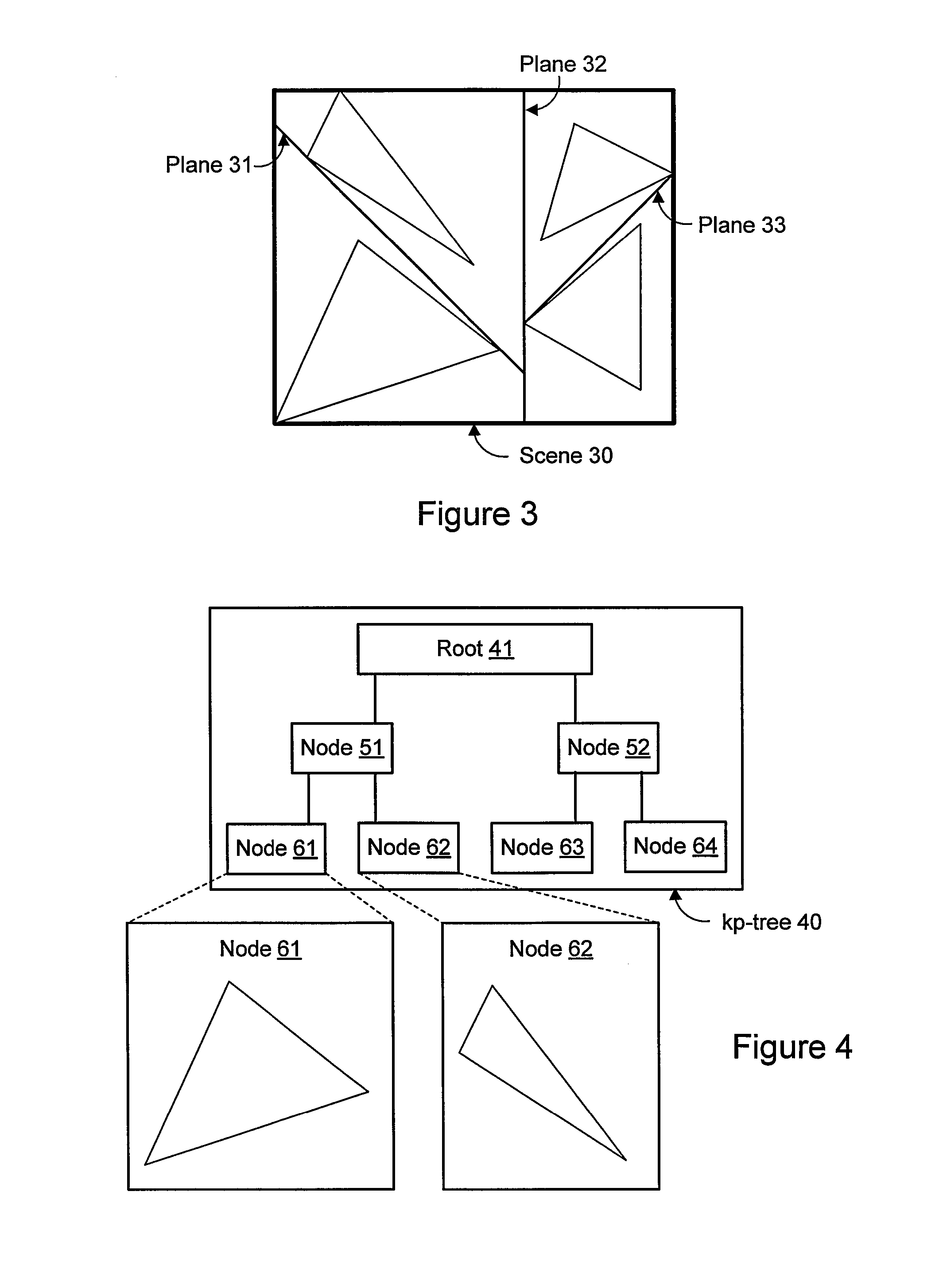Space partitioning trees using planes selected from a discrete set of orientations
a plane selection and space technology, applied in the field of computer systems, can solve the problems of simple tests, large amount of geometry, and limited use of ray tracing in the interactive space, and achieve the effect of reducing the complexity of the scen
- Summary
- Abstract
- Description
- Claims
- Application Information
AI Technical Summary
Benefits of technology
Problems solved by technology
Method used
Image
Examples
Embodiment Construction
[0023]Using embodiments of the systems and methods described herein, ray tracing computations (e.g., ray tracing queries) used in the rendering of three-dimensional (3D) graphics may be accelerated through the use of a data structure referred to herein as a kp-tree. As will be discussed in greater detail below, a kp-tree is a data structure that partitions objects in a scene (e.g., a 3D scene) into regions. The kp-tree may therefore comprise a spatial database of the objects in the scene. At each subdivision level, a plane may be selected that splits the current region into two sub-regions. The two new sub-regions may be placed in child nodes of the parent node (i.e., representing the current region) in a binary tree. In one embodiment, the splitting planes in the kp-tree may comprise planes having orientations selected from a discrete set of orientations. The planes selected from the discrete set of orientations may be referred to herein as “discrete oriented planes.” Embodiments o...
PUM
 Login to View More
Login to View More Abstract
Description
Claims
Application Information
 Login to View More
Login to View More - Generate Ideas
- Intellectual Property
- Life Sciences
- Materials
- Tech Scout
- Unparalleled Data Quality
- Higher Quality Content
- 60% Fewer Hallucinations
Browse by: Latest US Patents, China's latest patents, Technical Efficacy Thesaurus, Application Domain, Technology Topic, Popular Technical Reports.
© 2025 PatSnap. All rights reserved.Legal|Privacy policy|Modern Slavery Act Transparency Statement|Sitemap|About US| Contact US: help@patsnap.com



